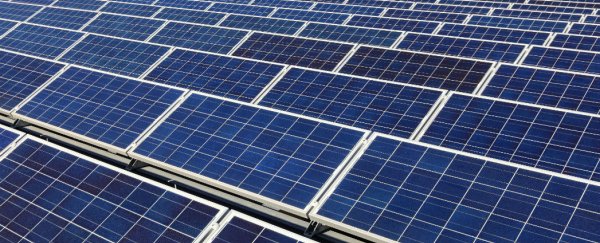As steady and promising as the rise in solar power use has been, there's still plenty of room left for innovation and improvement: in cell efficiency, in energy storage, in the cost of the hardware, to name a few. And now a new type of antenna could facilitate twice the amount of efficiency in existing solar panels, and help make rooftop solar cells a much more common sight.
A group of scientists from the University of Connecticut in the US have developed the antenna, which collects much more of the blue part of the light spectrum than existing devices do. Today's silicon solar panels aren't very adept at capturing blue photons, so a lot of potential energy is wasted - the cells you currently see on houses will usually only capture 11 to 15 percent of the available energy, which isn't a great return. Panels specially created in laboratories can get this figure up to 25 percent or even higher, but they're prohibitively expensive for the average homeowner.
Now the team believes it has an antenna that can capture double the amount of energy that a standard commercial panel can. The researchers are presenting their work at the 250th National Meeting & Exposition of the American Chemical Society.
"Many groups around the world are working hard to make this kind of antenna, and ours is the first of its kind in the whole world," lead researcher Challa V. Kumar said in a press release. "Most of the light from the Sun is emitted over a very broad window of wavelengths. If you want to use solar energy to produce electric current, you want to harvest as much of that spectrum as possible."
The key to the new technology is organic dye. Light photons excite dye molecules which can then emit silicon-friendly photons ready to be converted into energy, if the chemical conditions are right: the researchers embed the dyes inside a protein-lipid hydrogel to keep the molecules separated but tightly packed. The resulting thin, pinkish film can be coated on top of a solar cell to vastly improve its efficiency at capturing light.
And while that process might sound complicated, it's actually not too difficult or expensive to do - Kumar says it can be "done in the kitchen or in a remote village" as the situation demands. What's more, the materials involved are compostable and kind to the environment if they need to be abandoned.
The next step is turning this into a commercial product, and the scientists have enlisted the help of a local Connecticut company to try and make this happen. The team is also exploring ways in which the versatile hydrogel could be used for drug delivery and in white light-emitting diodes.
